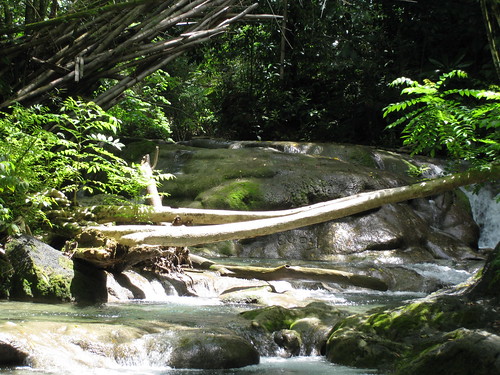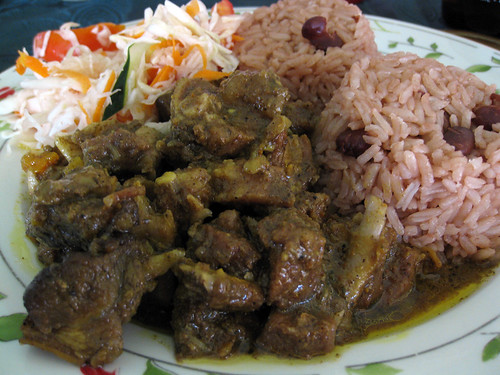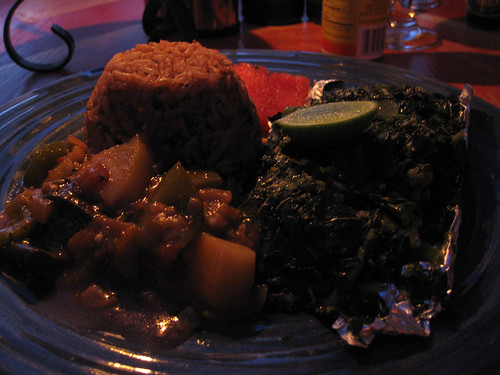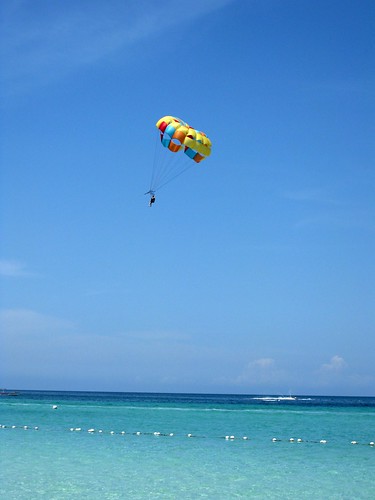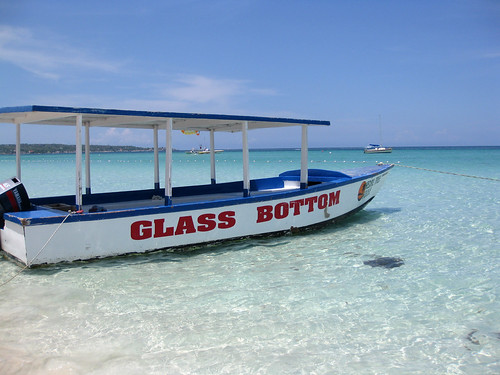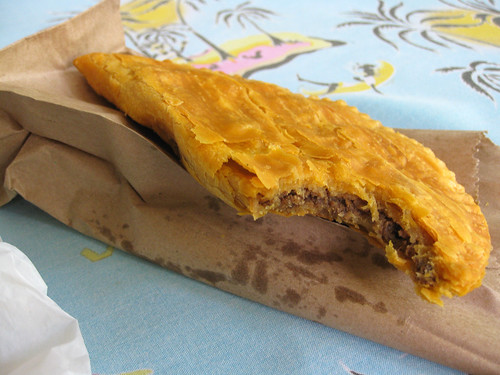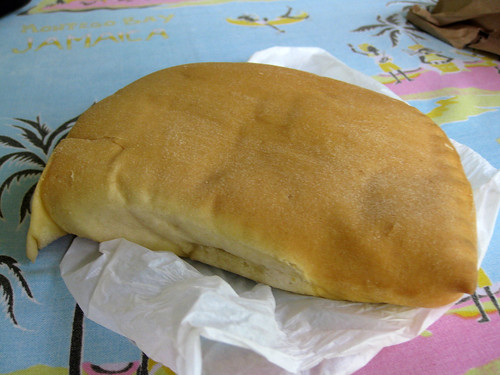Jamaica has no shortage of waterfalls and even before I’d purchased my flight I knew I wanted to visit at least one of them. Mayfield Falls was the closest to Negril, so after a hearty Jamaican breakfast at Country Country, I was picked up by a taxicab to take me on the long drive to Mayfield.
My breakfast of ackee, callaloo, Johnny cakes and fruit was filling but not quite as tasty as the banana pancakes I’d tried the day before. Although it’s a fruit, the ackee tasted (and looked) similar to scrambled eggs. Unfortunately, I’m not a fan of scrambled eggs. A security attendant at Country Country told me that ackee can be prepared in a myriad of ways and tastes. If I ever have the chance, I’d like to try it again.
But back to Mayfield. The main road to Mayfield Falls was closed when I visited, so the driver took us through the long route, which was fine, because I got to see his hometown, sugarcane fields and endless mountain ranges as we drove by. After about an hour, we arrived at Mayfield and was assigned a guide to help our group hike through the river.
My only complaint about Mayfield Falls is that the guides encourage visitors to pose in all kinds of cheesy positions while they take photos. Frankly, I’m not looking for Disneyland-esque moment while I’m concentrating on not falling flat on my face in a rocky, gushing river, but I can see how the photography aspect might be novel for some visitors. Other than that, our guide was wonderful and the river was stunning.
A couple hours and countless unflattering photos later, we reached the river’s head and turned around to walk back to the beginning via land. I was famished, so I picked a beef patty for the ride back to my cottage.
Later that evening, I explored our neighborhood in Negril in search of more Jamaican cuisine. I wandered into Cool Spot, a spartan restaurant on Norman Manley Boulevard with four or five items on the menu that day. I had the curry goat with rice and peas.
The goat was far less gamey than I had anticipated and was pretty similar to beef, actually. It had stewed for so long that it practically fell off the bone (of which there were many shards to be careful for in the curry). The rice and peas sopped up the sauce, which tasted a lot like a richer version of khoresh-e kaari, or Iranian curry khoresh.
The walk back to my cottage was short and I was ready to call it a day. I had already crossed many items off my to-eat list in Jamaica, but I was still excited for all the ones yet to be discovered.


